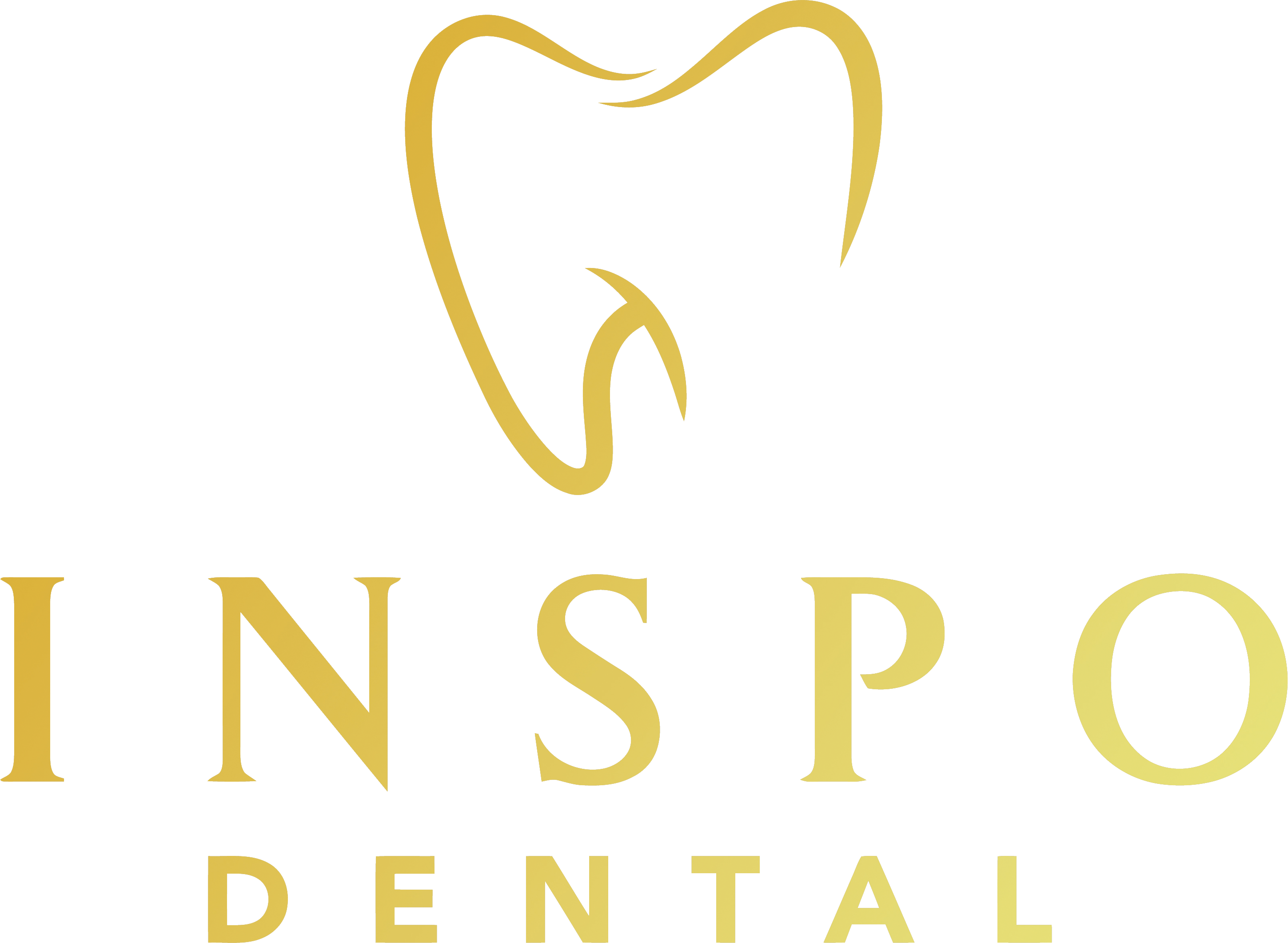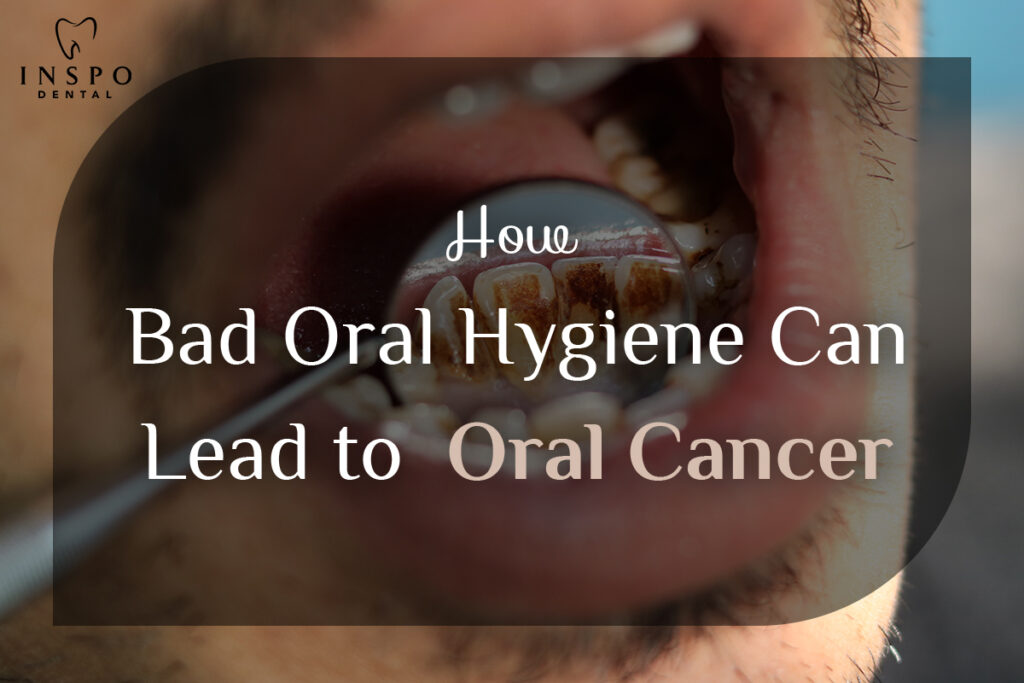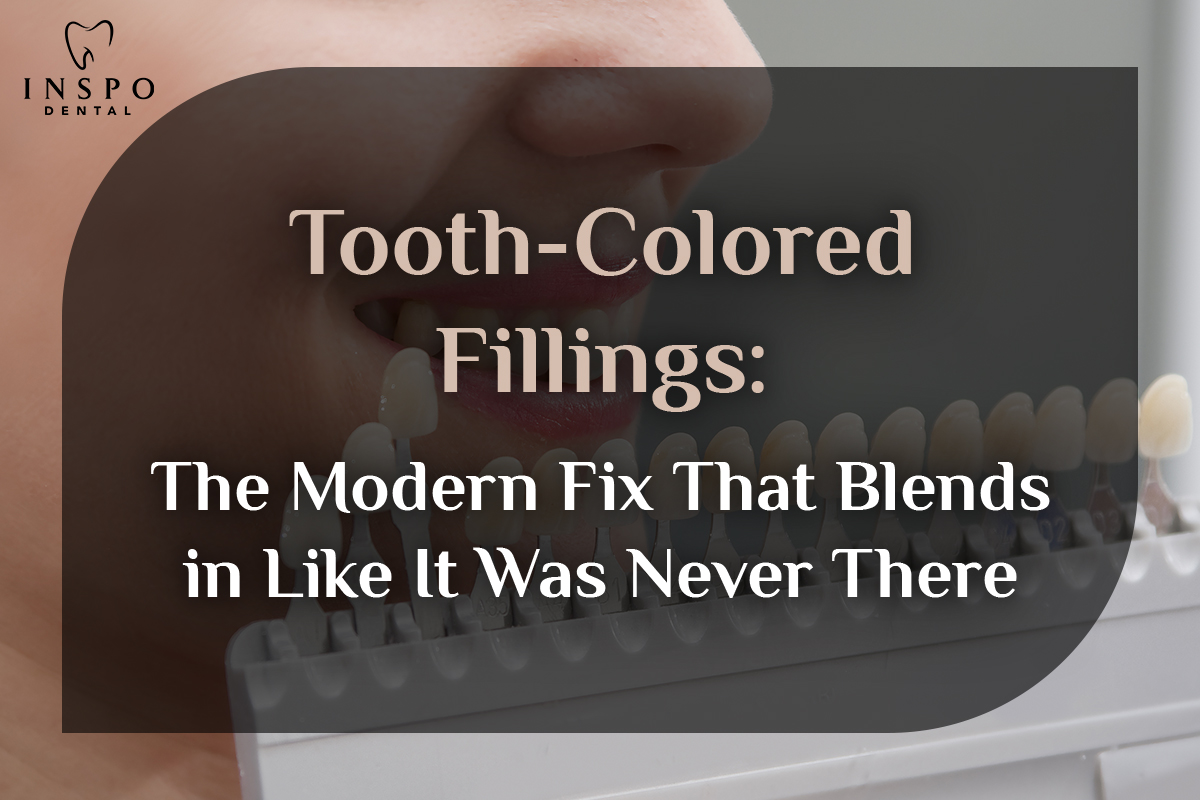
While oral cancer can have multiple causes, including genetic factors and lifestyle choices like tobacco and alcohol use, there is evidence to suggest that poor oral hygiene can contribute to its development. Here’s how bad oral hygiene can play a role in increasing the risk of oral cancer:
- Oral Microbiome Imbalance: The human mouth is home to a diverse community of bacteria, fungi, and other microorganisms known as the oral microbiome. When oral hygiene is poor, with inadequate brushing, flossing, and regular dental check-ups, the balance of the oral microbiome can be disrupted. This imbalance may lead to an overgrowth of harmful bacteria, which can contribute to chronic inflammation and tissue damage in the oral cavity, potentially increasing the risk of oral cancer development.
- Chronic Inflammation and Tissue Damage: Poor oral hygiene can result in chronic inflammation and irritation of the oral tissues, including the gums, tongue, and lining of the mouth. Chronic inflammation is a known risk factor for cancer development, as it can lead to cellular damage, DNA mutations, and changes in cell growth and proliferation. Prolonged exposure to irritants, such as plaque and tartar buildup from inadequate oral hygiene practices, can contribute to tissue damage and increase the likelihood of cancerous changes.
- Oral Lesions and Ulcers: Neglecting oral hygiene can lead to the formation of oral lesions, ulcers, and other abnormalities in the mouth. These lesions may result from trauma, infection, or chronic irritation of the oral tissues. While most oral lesions are benign and resolve on their own, some may progress to oral cancer if left untreated. Regular dental examinations can help identify and monitor oral lesions, allowing for early detection and intervention when necessary.
- HPV Infection: Human papillomavirus (HPV) infection is a known risk factor for oral cancer, particularly oropharyngeal cancer. Poor oral hygiene may increase the risk of HPV infection by creating an environment conducive to viral transmission and proliferation. Additionally, compromised oral mucosa resulting from poor oral hygiene practices may facilitate the entry of HPV into the underlying tissues, increasing the likelihood of cancerous transformation.
- Weakened Immune Response: Chronic inflammation and infection resulting from poor oral hygiene can weaken the immune response in the oral cavity. A compromised immune system may be less effective at detecting and eliminating abnormal cells, allowing cancerous changes to progress unchecked. Furthermore, systemic inflammation associated with poor oral health can impact overall immune function, potentially contributing to the development and progression of oral cancer.
- Promotion of Carcinogenic Substances: Poor oral hygiene can lead to the accumulation of carcinogenic substances in the oral cavity. For example, tobacco smoke contains numerous harmful chemicals that can cause DNA damage and promote the development of cancerous lesions. When oral hygiene is neglected, these carcinogens may linger in the mouth for longer periods, increasing the exposure of oral tissues to potentially cancer-causing agents.
- Weakening of Protective Barrier: Adequate oral hygiene helps maintain the integrity of the oral mucosa, which serves as a protective barrier against harmful substances and pathogens. When oral hygiene is poor, the oral mucosa may become compromised, allowing carcinogenic agents to penetrate more deeply into the underlying tissues. This weakening of the protective barrier can facilitate the initiation and progression of oral cancer.
- Interplay with Other Risk Factors: Poor oral hygiene can interact synergistically with other established risk factors for oral cancer, such as tobacco and alcohol use. For example, individuals who smoke or consume alcohol heavily are more likely to experience gum disease and other oral health problems associated with poor oral hygiene. This combination of risk factors can further increase the likelihood of oral cancer development.
- Impaired DNA Repair Mechanisms: Chronic inflammation and tissue damage resulting from poor oral hygiene can impair DNA repair mechanisms in the oral tissues. DNA repair processes play a crucial role in detecting and correcting errors in the genetic code, preventing the accumulation of mutations that can lead to cancer development. When these repair mechanisms are compromised, the risk of malignant transformation increases.
- Association with Oral Precancerous Lesions: Poor oral hygiene has been associated with an increased prevalence of oral precancerous lesions, such as leukoplakia and erythroplakia. These lesions are characterized by abnormal changes in the oral mucosa that may progress to oral cancer if left untreated. Neglected oral hygiene practices can exacerbate the risk of malignant transformation in precancerous lesions, highlighting the importance of early detection and intervention.
- Impact on Overall Health: Oral health is closely linked to overall health, with emerging evidence suggesting connections between oral diseases and systemic conditions such as cardiovascular disease, diabetes, and certain cancers. Poor oral hygiene can contribute to systemic inflammation and immune dysregulation, which may indirectly influence the development and progression of oral cancer and other related conditions.
- Impact of Diet and Nutrition: Poor oral hygiene is often associated with an unhealthy diet high in sugar, processed foods, and lacking in essential nutrients. A diet rich in fruits, vegetables, and whole grains provides important vitamins, minerals, and antioxidants that support oral health and help reduce the risk of oral cancer. Conversely, a diet low in these nutrients may weaken the immune system, impair oral tissue repair, and increase susceptibility to oral cancer development.
- Role of Chronic Conditions: Individuals with chronic conditions such as diabetes, HIV/AIDS, and autoimmune disorders may be at higher risk of oral health problems, including gum disease and oral infections. Poorly managed chronic conditions can compromise the immune system and impair oral tissue healing, potentially contributing to the development and progression of oral cancer. Proper management of underlying health conditions is essential for maintaining oral health and reducing the risk of oral cancer.
- Psychosocial Factors: Psychosocial factors such as stress, depression, and social isolation can impact oral health behaviors and contribute to poor oral hygiene practices. Stress-related behaviors such as smoking, excessive alcohol consumption, and neglecting oral hygiene may increase the risk of oral cancer. Addressing psychosocial factors through stress management techniques, social support, and mental health interventions can promote healthier oral hygiene habits and reduce oral cancer risk.
- Importance of Early Detection: Early detection of oral cancer is critical for successful treatment and improved outcomes. Regular dental examinations allow dentists to detect early signs of oral cancer, including suspicious lesions, discolorations, and abnormalities in the oral tissues. Timely diagnosis enables prompt intervention, potentially preventing the progression of oral cancer to more advanced stages. Individuals should prioritize routine dental check-ups and seek evaluation for any concerning oral symptoms or changes.
- Educational and Preventive Initiatives: Public health initiatives aimed at promoting oral hygiene, raising awareness of oral cancer risk factors, and encouraging preventive behaviors play a crucial role in reducing the burden of oral cancer. Educational campaigns, community outreach programs, and school-based interventions can empower individuals to adopt healthier oral hygiene practices, make informed lifestyle choices, and seek timely dental care. By addressing modifiable risk factors and promoting early detection, these initiatives contribute to oral cancer prevention and control efforts.
- Collaborative Efforts in Oral Cancer Prevention: Collaboration among healthcare professionals, dental practitioners, public health agencies, policymakers, and advocacy organizations is essential for comprehensive oral cancer prevention efforts. By working together to implement evidence-based interventions, raise awareness, and improve access to oral healthcare services, stakeholders can make significant strides in reducing the incidence, morbidity, and mortality associated with oral cancer. Multidisciplinary approaches that address the social, economic, and environmental determinants of oral health are key to achieving sustainable progress in oral cancer prevention.
- Genetic and Epigenetic Factors: While lifestyle factors like poor oral hygiene play a significant role in oral cancer development, genetic and epigenetic factors also contribute to individual susceptibility. Certain genetic variations and epigenetic modifications can influence an individual’s response to carcinogens, inflammation, and DNA damage in the oral cavity. Understanding the interplay between genetic predisposition and environmental factors, including oral hygiene practices, can provide insights into personalized approaches for oral cancer prevention and management.
- Impact of Age and Aging: Aging is associated with changes in oral health, including decreased saliva production, gum recession, and increased susceptibility to oral diseases. Older adults may be more prone to poor oral hygiene due to age-related factors such as arthritis, cognitive decline, and mobility limitations. As the aging population grows, addressing oral health disparities and promoting preventive strategies tailored to older adults are essential for reducing the burden of oral cancer and related complications in this demographic.
- Environmental Exposures: Environmental factors such as air pollution, occupational hazards, and exposure to carcinogens in the workplace or community can influence oral cancer risk. Poor oral hygiene practices may exacerbate the effects of environmental exposures by compromising oral mucosal integrity and immune function. Occupational groups with higher exposure to hazardous substances, such as asbestos, formaldehyde, and certain metals, may have an elevated risk of oral cancer, highlighting the importance of workplace safety measures and protective interventions.
- Cultural and Socioeconomic Determinants: Cultural beliefs, social norms, and socioeconomic factors can influence oral hygiene behaviors and access to dental care services. Disparities in oral health outcomes and oral cancer incidence are often linked to socioeconomic inequalities, limited education, and barriers to healthcare access. Culturally sensitive approaches that address social determinants of health and promote equitable access to preventive services can help mitigate disparities in oral cancer risk and improve oral health outcomes in underserved populations.
- Preventive Strategies and Interventions: Effective preventive strategies for oral cancer should encompass a range of interventions targeting multiple levels of influence, from individual behaviors to community-wide initiatives. Community-based oral health promotion programs, school-based education campaigns, and workplace wellness initiatives can raise awareness of oral cancer risk factors, promote healthy lifestyle behaviors, and encourage regular dental check-ups. Comprehensive preventive care should include oral cancer screenings, risk assessments, and counseling on tobacco cessation and alcohol moderation.
- Technology and Innovation in Oral Cancer Detection: Advances in technology, including imaging techniques, molecular biomarkers, and artificial intelligence (AI), hold promise for improving early detection and diagnosis of oral cancer. Innovations such as salivary biomarker analysis, optical imaging devices, and AI-based algorithms for analyzing oral lesions show potential for enhancing screening accuracy, identifying high-risk individuals, and facilitating timely intervention. Integrating technology-driven approaches into oral cancer screening programs can enhance detection rates and improve patient outcomes.
- Global Burden and Public Health Impact: Oral cancer is a significant public health concern worldwide, with substantial morbidity, mortality, and socioeconomic costs. The global burden of oral cancer varies by region, with higher incidence rates observed in low- and middle-income countries. Addressing oral cancer requires a coordinated, multisectoral approach that prioritizes prevention, early detection, treatment access, and palliative care. Global initiatives, advocacy efforts, and partnerships across sectors are essential for reducing the global burden of oral cancer and achieving equitable oral health outcomes for all.
In summary, the relationship between poor oral hygiene and oral cancer is complex and multifaceted, influenced by a combination of individual, environmental, and systemic factors. Addressing the underlying determinants of oral health, promoting healthy behaviors, and implementing evidence-based interventions are key strategies for reducing oral cancer risk and improving oral health outcomes at the population level. By adopting a holistic approach that integrates preventive measures, early detection strategies, and innovative technologies, stakeholders can make significant progress in the fight against oral cancer and its associated health disparities.






